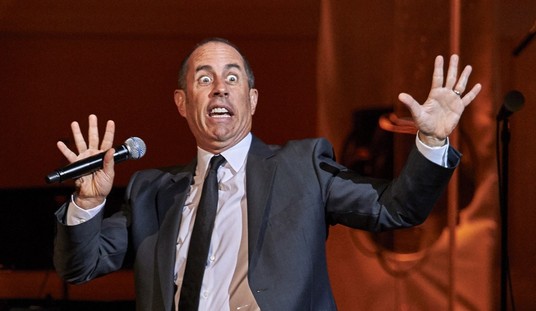Glenn Gould used to be my favorite interpreter of Bach. Since Simone Dinnerstein’s recordings of Bach began appearing, beginning with her Goldberg Variations in 2007, Gould has assumed the somewhat less exalted status as “one of my favorite interpreters” of Bach. My absolute favorite these past 6 or 7 years is Dinnerstein. Indeed, she is not only my favorite interpreter of Bach, she is my favorite pianist, period (if one can still enjoy that now-freighted locution.)
Membership, as the AMEX people keep telling you, has its privileges. Last night, at a semi-secure undisclosed location, members of the Friends of The New Criterion, were thrilled to have Ms. Dinnerstein perform Schumann’s haunting “Kinderszenen,” the 13 “Scenes of Childhood” that Schumann wrote in 1838, followed by Bach’s “Inventions,” the 15 short pieces Bach wrote to introduce his children and students to the mysteries of counterpoint. (Ms. Dinnerstein has just released a CD of Bach’s Inventions and Sinfonias for Sony, and she often performs one or more of the Kinderszenen.) It was a magical evening, reminiscent of the evening some of us spent at Bill Buckley’s New York apartment in 2007 where Ms. Dinnerstein performed all 32 of the Goldberg Variations for a rapt audience.
I have written about Simone Dinnerstein in the space before (here, for example, and here). Last night’s performance prompts me to repeat what I wrote in 2008 after hearing her perform at Lincoln Center:
Perhaps the most ravishing musical experience of my life was listening to Simone Dinnerstein play Bach’s Goldberg Variations’s at the home of a friend in Manhattan last autumn. In the weeks before the performance, I had listened several times to a CD of Dinnerstein’s remarkable 2007 interpretation of the work, but hearing her en famille, as it were, in the intimate setting of a living room with a dozen friends dramatically heightened the experience.
But it was the performance as well as the setting that made the evening so special. Hitherto my gold standard for renditions of this majestic piece of music was Glenn Gould’s 1955 recording. (Gould made a second recording shortly before his death, age fifty, in the early 1980s.) I especially admired the astringent clarity and architecture of Gould’s playing. Gould burrowed deep into the structure of Bach’s music, revealing its bones and sinews. His astonishing technical command allowed him to exhibit latent conversations within the music, rhythmic and emotional exfoliations that elaborated themselves with pristine lucidity, like crystals forming and dissolving in an ice-cold, light-inflected mountain stream.
Dinnerstein’s Bach is a warmer, but no less lucid creature. Like Gould, Dinnerstein commands a breathtaking technical mastery. And like him, she has made the music her own. She does not simply play the Goldbergs. She inhabits them, moving through its 30 variations like the rising sun through the rooms of a palace. Each chamber is suddenly illuminated and its distinctive character gradually revealed as the light lingers in loving dialogue with the soul’s furniture. And just as each day’s light has its own discoveries and omissions, so it was with Dinnerstein’s performances of the Goldbergs. Anyone who had heard the CD of her performing the work would have instantly recognized her stamp on the performance that evening. But what was remarkable was how distinctive each rendition was: like a familiar landscape seen at noon and then again an hour before dusk.
Dinnerstein is a master of rubato–listen, for example, to the way she coaxes Variation 4 to unfold itself before us–but also she handles the presto passages with breathtaking aplomb: her joyful unpacking of Variation 14 is a case in point. Dinnerstein’s Bach is perhaps less cerebral than Gould’s, but no less intelligent. There is an amplitude to her convocations that Gould’s austerity wouldn’t countenance.
But I revisit Dinnerstein’s Goldbergs merely as a prelude to mentioning her performance yesterday at the Walter Reade Theater at Lincoln Center in New York. Her late-morning concert, part of the Center’s Great Performers series, included two preludes and fugues (numbers 9 in E-major and 3 in C-sharp-major) from book II of the Well-tempered Clavier, Beethoven’s Sonata 13 in E-flat major, and Eine Kleine Mitternachtmusik, a curious, amusing and bemusing work by the contemporary American composer George Crumb. As an encore, Dinnerstein played the lovely A-major intermezzo from Brahms’s opus 118 suite of piano pieces.
It was a memorable occasion. Dinnerstein’s signature combination of technical command and patient lusciousness informed every moment. Her playing is less idiosyncratic than Gould’s, but no less distinctive. Her taste – witness the Crumb – ranges widely, yet there is a clarifying purity to her playing that inoculates it against mannerism. Her personality touches and enlivens all she plays, but one always feels that the focus is on the music, not the music maker. This is true artistry, a sort of musical midwifery in which the point is not the performer but the thing performed. I hope you’ll have an opportunity to hear her (her concert schedule is posted here). You’ll certainly be hearing a lot more about her.
And so you, if you pay any attention at all to classical music, have. Dinnerstein’s Goldbergs catapulted her to classical musical stardom, and her several subsequent CDs — I recommend in particular “Bach: A Strange Beauty” — have consolidated that impressive debut.








Join the conversation as a VIP Member